
|
 Backgammon Galore FAQ
Backgammon Galore FAQ 
By Tom Keith (2005).
How to set up a backgammon board, move the checkers, use the doubling cube, and proper etiquette. How to play other games such as acey-deucey, Nackgammon, and Greek variations. Match play rules and strategy. How ratings work.
|

|
 Rules of Backgammon
Rules of Backgammon 
By Tom Keith (1995).
Complete rules of backgammon as it is played today: How to set up the board, the object of the game, how to start, how to move the checkers, hitting and entering, bearing off, using the doubling cube, and scoring.
|

|
 Introduction to the Rules of Backgammon
Introduction to the Rules of Backgammon 
By Tom Keith (2005).
A beginner's guide to backgammon, including answers to the most frequently asked questions about the rules. Everything you need to know about using the doubling cube, scoring, and the proper procedure and etiquette.
|

|
 Backgammon Variants
Backgammon Variants 
By Tom Keith (2004).
There are dozens of great games you can play on a backgammon board, ranging from simple games for children to very elaborate games. Here are rules for all the most ones including Acey-Deucey, Fevga, Gul Bara, Gioul, Moultezim, Narde, Plakoto, Trictrac, Hyper-Backgammon, and Nackgammon.
|

|
 Rules for the Game of Trictrac
Rules for the Game of Trictrac 
By David Levy (1998).
Complete rules for how to play the game of trictrac. Trictrac is a rich, formal game that was immensely popular in French society prior to the revolution. The rules are quite elaborate. The goal is to score points for particular positions and movements.
|

|
 The History of Backgammon
The History of Backgammon 
By Oswald Jacoby and John R. Crawford (1970).
An extensive history of backgammon tracing its origins through Mesopotamia (now Iraq), Egypt, India, Greece, Rome, the Middle East, Europe, England, and the United States. With photographs from museums and art galleries around the world. (From The Backgammon Book, Introduction.)
|

|
 A History of Backgammon
A History of Backgammon 
By Mark Driver (2000).
Subtitled "The Evolution of Backgammon and the Factors Influencing Its Popularity and Longevity," this is one of the most complete histories of backgammon ever written.
|

|
 History of Backgammon
History of Backgammon 
By Chuck Bower (1999).
A 20th Century history and status report on backgammon—one individual's perspective. This article as three parts: "A Brief History of Backgammon", "The Computer Revolution", and "Present and Future".
|

|
 Backgammon and Doubling: Just the Facts
Backgammon and Doubling: Just the Facts 
By Bill Davis (2009).
Chicago Point has collected a treasure trove of historical information on the introduction of doubling in backgammon, from old newspapers, magazines, and books.
See also: New Historical Information uncovered by Frank Frigo.
|

|
 When in Rome
When in Rome 
By Kit Woolsey (1999).
Backgammon is, in essence, a race. Your overall plan is to take the lead in the race. If you are behind in the race you must do something about it, such as containing one of your opponent's checkers or forcing him to leave you a shot which you hit. "When ahead in the race, race. When behind in the race, don't race."
|

|
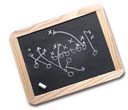 What's Your Game Plan?
What's Your Game Plan? 
By Kit Woolsey (2001).
Despite the luck of the dice, having a game plan is just as important in backgammon as in chess. It may not be such a precise plan, and you must be prepared to change your plan as dictated by the dice, but you should still have an idea of what you are trying to accomplish. Having a good game plan in mind facilitates the search for good moves.
|

|
 Avoiding Burger King
Avoiding Burger King 
By Kit Woolsey (2003).
Five common types of flawed thinking which lead to big errors: Missing a candidate move; losing the forest through the trees; misevaluating priorities; making awkward plays; and failure to cube. If you can avoid these errors, you will be playing backgammon as well as humanly possible.
|

|
 How to Play the Opening Rolls
How to Play the Opening Rolls 
By Tom Keith (2006).
In-depth analysis of each of the 15 possible opening rolls. Each roll includes a survey of the most popular ways to play the roll, advantages and disadvantages of the possible plays, and a rollout showing how Gnu Backgammon ranks the plays. The article is sprinkled with quotes from other authors about how to approach the opening rolls.
|

|
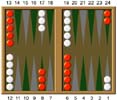 In the Beginning
In the Beginning 
By Nack Ballard and Paul Weaver (2003).
A three-part series on the first rolls of a game of backgammon. This series is suitable for backgammon players of all strengths. Part 1 aims mostly at teaching beginning and intermediate players. Parts 2 and 3 build on earlier knowledge and gradually present a greater challenge.
|

|
The Doubling Cube 
By Peter Bell (1995).
I'd like to share my thoughts on how to handle the doubling cube in money games. I'm hoping beginners and intermediates may find this information useful. If you are a strong player, you already know everything I have to say!
|

|
 The Half-Crossover Pipcount
The Half-Crossover Pipcount 
By Douglas Zare (2000).
Knowing whether one is ahead in the race or not is vital for correct playing strategies. Here is a new, simple method for establishing an approximate pip count, which often is good enough. Then when you need it, a few extra calculations gives you the exact pip count.
|

|
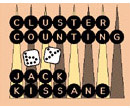 Cluster Counting
Cluster Counting 
By Jack Kissane (1992).
Jack Kissane, backgammon master from Albany, New York, is known in many chouette circles as the fastest pip counter in the world. In a June 1989 Chicago Point interview, Kissane claimed that he can count almost any backgammon position within five seconds. Here, Jack Kissane shares his counting techniques with the backgammon community.
|

|
 Naccel 2--aN ACCELerated Pipcount
Naccel 2--aN ACCELerated Pipcount 
By Nack Ballard (2010).
Naccel is an advanced system of pip counting first described by Nack Ballard in the September 2001 edition of Backgammon Today. In 2010, Nack wrote a series of posts on the BGOnline Forum describing a revised version of Naccel called Naccel 2. This series of 12 articles is taken from those posts.
|

|
 Five Point Match
Five Point Match 
By Kit Woolsey (1999).
Woolsey examines every possible score for the five point match and looks at cube and checker play strategy for each score.
|

|
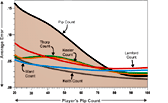 Cube Handling in Noncontact Positions
Cube Handling in Noncontact Positions 
By Tom Keith (2004).
A description and evaluation of several popular methods of making cube decisions in noncontact positions. This article introduces the "Keith" count, an accurate formula for making race cube decisions.
|

|
 Effective Pip Count
Effective Pip Count 
By Walter Trice (2000).
Trice introduces the term "effective pip count" and describes some clever methods of calculating it in different types of positions. In positions where it applies, the effective pip count is a very accurate method of making cube decisions in noncontact positions.
|

|
The Effective Pip Count 
By Douglas Zare (2003).
There are several methods for adjusting the pip count to penalize wasteful formations, and the effective pip count (epc) is the best that I have encountered. It not only allows me to assess most races to within a pip, but it provides a framework for learning.
|

|
 Forming and Operating a Backgammon Club
Forming and Operating a Backgammon Club 
By Bill Davis (1996).
These tips are from Bill Davis of the Chicago Point newsletter and Chicago Bar Point Club. They are primarily based on experience of United States clubs, but most of the advice should apply anywhere.
|

|
The Trial (and Tribulations) of Oregon Promoter Ted Barr 
By Backgammon Times (1982).
A detailed account of the 1982 trial, the State of Oregon v. Ted Barr, in which backgammon promoter Ted Barr successfully defends his right to hold a backgammon tournament. "Judge Walker concluded that backgammon is a game of skill, not a game of chance."
|

|
 Sportsmanlike Conduct
Sportsmanlike Conduct 
By Phil Simborg (1995).
Here are things that I would like to suggest should be the do's and don'ts of backgammon play. Most of these apply to both live matches and electronic (internet) play. Chouette play has an even more complex set of standards.
|

|
 Introduction to Ratings
Introduction to Ratings 
By Tom Keith (2006).
An explanation of how ratings work in backgammon. What factors affect your rating. All about the rating formula. How to figure your chances of winning a match against another player.
|

|
 Mark Your Calendar Alive
Mark Your Calendar Alive 
By Carol Joy Cole.
Calendar of tournaments held in the United States and around the world. Includes face-to-face tournaments as well as some online tournaments.
|

|
 Chicago Bar Point Club Tournament Procedure
Chicago Bar Point Club Tournament Procedure 
By Bill Davis (1996).
Procedures for running a club tournament. A sample score sheet shows how the draw works, with a side pool, and how the prizes are awarded.
|

|
Live Backgammon Tournaments 
By Phil Simborg (2006).
If you have ever played at a live tournament, you know that there is nothing else like it. I've played in many, and my adrenaline goes up every time. Here are some tips for newcomers.
|

|
31 Things You Need to Know for your First ABT Tournament 
By Stick Rice (2008).
Advice from various players about attending your first ABT event.
|

|
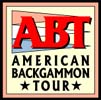 U.S. Backgammon Tournament Rules and Procedures (2009)
U.S. Backgammon Tournament Rules and Procedures (2009) 
By ABT (2009).
Rules of conduct for backgammon tournaments in the United States.
Previous editions of the rules: 2008 Rules * 1990 Rules.
Changes in rules: From 2008 to 2009 * From 1990 to 2008.
|

|
Bill Robertie's Backgammon Lessons 
By Bill Robertie (2015).
A series of lessons posted to Bill Robertie's blog:
Lesson 1: Early game: which point to make?
Lesson 2: Run or Anchor?
Lesson 3: Making the 5-Point
Lesson 4: Using Benchmark Positions
Lesson 5: Split or Slot?
Lesson 6: Volunteering a Shot
Lesson 7: Duplication
Lesson 8: More on Duplication
Lesson 9: High Anchor Holding Games
Lesson 10: Holding Game Doubles
Lesson 11: Position or Race?
|

|
Ten Backgammon Lessons 
By Phil Simborg (2006).
In 45 years of playing backgammon, Phil Simborg has been fortunate to have received backgammon lessons and tips from some of the best players who ever lived. Here are the 10 best lessons, summarized for you.
|

|
 Annotated Match: Kit Woolsey vs. Jeremy Bagai
Annotated Match: Kit Woolsey vs. Jeremy Bagai 
By Kit Woolsey and Jeremy Bagai (1994).
In February of 1994, Kit Woolsey and Jeremy Bagai thought it would be a good idea to annotate a match for FIBS players so they could see the thinking processes of the more experienced players. They played a fairly interesting match, logged it, and then annotated it independently.
|

|
 Position of the Day
Position of the Day 
By Chris Bray (2016).
A great collection of cube an checker problems posted one-per-day by backgammon author Chris Bray.
|

|
Paul Magriel's Columns in the New York Times 
By Tom Keith (2013).
From June 1977 to July 1980, Paul Magriel wrote a weekly column on backgammon for the New York Times. The columns are presented here as they originally appeared, with photos added and rollouts of every position.
|

|
 Computers and Rollouts
Computers and Rollouts 
By Kit Woolsey (2000).
A history of using computers to roll out backgammon positions, from Expert Backgammon to TD-Gammon, Jellyfish, and Snowie. Some of the advantages and disadvantages of using computer rollouts. And a look to the future.
|

|
Rollouts 
By Douglas Zare (2002).
This article illustrates what information we can get from rollouts and what we can’t, and guides the process of choosing which rollouts to perform. It starts out simply, but introduces some complicated ideas in the examples.
|

|
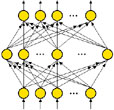 Temporal Difference Learning and TD-Gammon
Temporal Difference Learning and TD-Gammon 
By Gerald Tesauro (1995).
TD-Gammon was the first computer program to achieve a level of play close to the best human players. The brains of the program is a neural network that was able to learn to play well by playing many times against itself and learning from the results. This article was originally published in Communications of the ACM, March 1995.
|

|
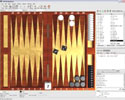 All About Gnu Backgammon
All About Gnu Backgammon 
By Albert Silver (2006).
Gnu Backgammon is a very strong computer program for playing and analyzing backgammon matches. It is available free for anyone to download and use. Albert Silver's guide takes you through all the features of the program and shows you how to use them. This is the best documentation available for the program.
|

|
 The Michael Depreli Bot Comparisons
The Michael Depreli Bot Comparisons 
By Tom Keith (2011).
The results of two studies done by Michael Depreli comparing the playing the strength of the top bots: Jellyfish, Snowie, Gnu Backgammon, BG-Blitz, and Extreme Gammon.
|

|
 Give Me a Break--Give It a Number
Give Me a Break--Give It a Number 
By Phil Simborg and Stu Katz (1994).
"We got sick of hearing our friends tell us about how they lost a game that just couldn't be lost, so we developed a code to save time."
|

|
 The Phil Simborg Interviews
The Phil Simborg Interviews 
By Phil Simborg (2011).
Phil Simborg has interviewed some of the most interesting people in backgammon. He asks great questions and the interviews are fascinating to read. There are about 30 interviews in total and together they would make a great book on backgammon.
|

|
Masters of Backgammon Biographies 
By Masters of Backgammon (2009).
Short biographies of many top backgammon backgammon players produced by Masters of Backgammon.
|

|
 My Bumpy Life in Backgammon
My Bumpy Life in Backgammon 
By Ric Gerace (2001).
"How I found backgammon, or how it found me, and how I lost the girl, and then another girl, and oh, hell, it's been fun without them anyway."
|

|
Riding the Tiger 
By Bob Floyd (1982).
Bob Floyd takes a look at a position composed by Bill Kennedy where both sides are on the bar. Kennedy wanted to know if it was a "perpetual redouble," that is, that both players should double until one of them enters. Floyd's amazing answer was that the position has undefined equity, so there is no way to tell the correct cube action.
|

|
 Backgammon Ends
Backgammon Ends 
By Douglas Zare (2000).
Proof that it is impossible for a backgammon game to last forever. If you use random dice and any legal playing strategy (even trying to lose), then the probability the game has ended by the nth move gets arbitrarily close to 1 as n increases.
|



![]()


